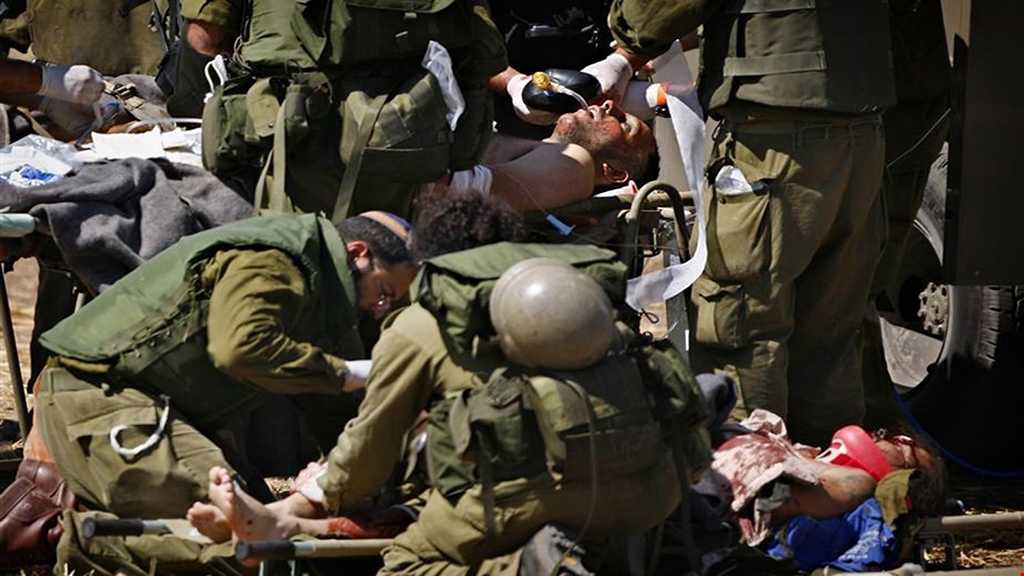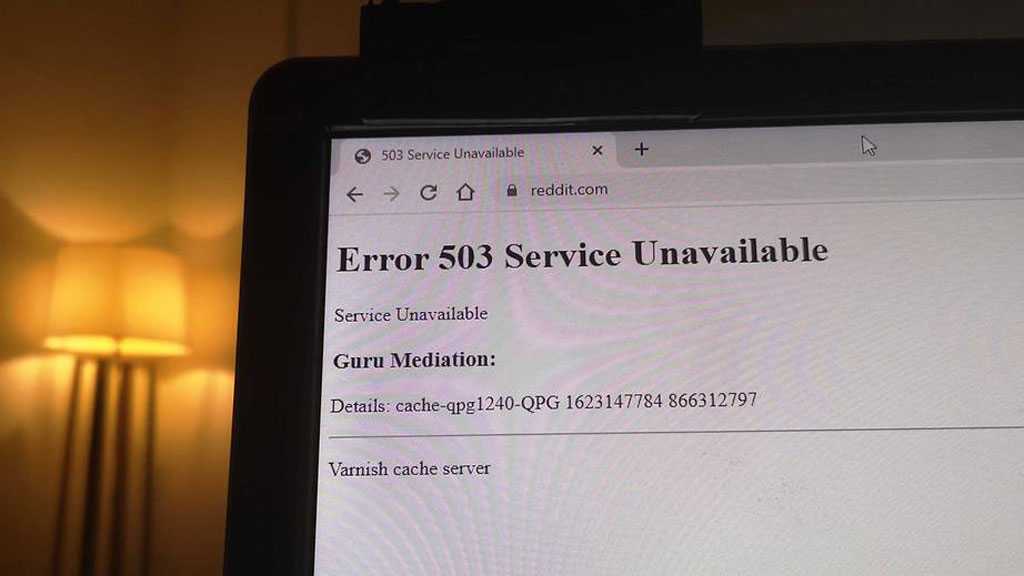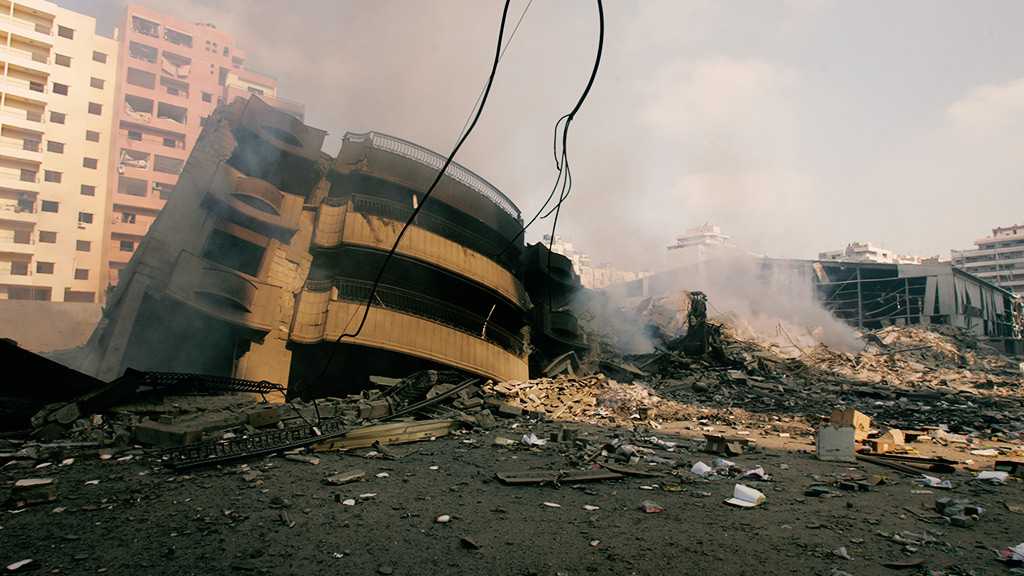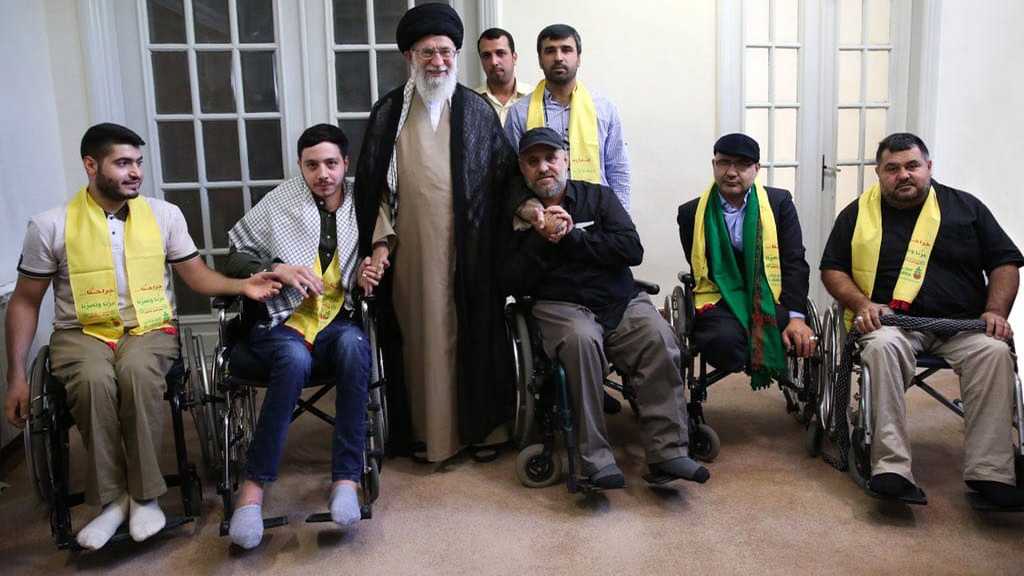The Facts from Operation Truthful Promise

Ibrahim al-Amin
Less than 6 years on, the Shaba'a 2000 scenario was repeated – but with complete success! On July 12, the state of alert along the border seemed different than before. Hezbollah had noticed that “Israel” was thoroughly scrutinizing a lot of things. It was talking about "indications of Hezbollah's intention to do something." As far as the resistance was concerned, everything was ready: transportation vehicles, medical operations room, captivity room – and refrigerators for those killed in battle.
In the central operations room, Hajj (A. M.) sat beside the commander of the ground units Haj (M), the first sector officer Hajj (G) and others from the field intelligence unit in the resistance. A couple of cups of tea and summer fruits sat on a wooden table. (M) did not stop telling jokes. He recalled that he had survived an enemy surveillance operation for the 110th time along the border area. But in those days the burden of the task required a greater degree of movement.
(A. M.) said "Sayyed Hassan has once again fulfilled his promise to the public that a capture operation will take place. This requires additional work from us to achieve the objective and obtain the desired result: to capture soldiers that “Israel” cares about (that are not of Arab origin) while they are still alive."
A while back, preparations for such an effort were unsuccessful. Sometimes, the target was moving in an area that needed complex operational arrangements. Other times, public warnings by the resistance imposed a constant alert on the part of the enemy soldiers. But this does not preclude scrutiny of the procedures to reach an accessible gap. These are the equations of the resistance: there is a gap in each of the enemy’s procedure. The most important thing is to diagnose it accurately and not to make any error in the estimation and timing.
There was a permanent review of past experiences by the leadership. One of the major missions took place in the town of Ghajar. The groups were prepared to execute a new kind of operation: storming fixed positions under unprecedented, centered and extensive artillery shelling of all points of the enemy’s movement. Hundreds of fighters were ready to carry out the largest incursion operation. Military-upgraded civilian cars were prepared near the location without anyone paying attention to the matter. The resistance imposed a routine movement for its fighters and cars until the scene began to look like a boring routine: the resistance fighters monotonously monitor the next scene. They whisper and then disappear.
When the decision came to launch the attack, the resistance needed only a few minutes to succeed in paralyzing the movement of all the “Israeli” positions in the area and the hills overlooking it. The shelling was very violent and intense. The anti-tank rocket launchers burned the military vehicles similar to the Atari, as Sayyed Nasrallah later described. Then the resistance fighters in four-wheel-drive vehicles and motorcycles stormed the place. For the first time in history, one of them carried a new weapon, the B-29. It was the new generation of the conventional Russian B7weapons. The machine guns did not stop firing in the direction of the bunkers and the ambushes. But there was a flaw in the monitoring process, which led to an unaccounted confrontation. A few minutes passed before a group of resistance fighter were ambushed, resulting in the martyrdom of four of them.
Communication with the central command pointed to the failure. Work was quickly done to pull the operations group from the battlefield. The special preparedness group assigned to confront any response from the enemy remained on high alert. Meanwhile, the “Israelis” were checking up on their soldiers through intensive radio communications. And as usual, the planes were late in reaching the area. When the Northern Command received news of the confrontations and the results, it made sure that no soldier went missing. The enemy's leaders breathed a sigh of relief. They decided to respond. A few hours passed and calm returned to the place. A long time passed since the Ghajar Operation. The process of drawing lessons by the leadership of the resistance intensified. Sayyed Nasrallah, who has always faced situations of this kind, overlooked the errors of those responsible for the operation. In his own way, he praised God and asked Him to help make other missions successful. As for the leaders concerned, they were stressed for a long while. Silence prevailed, accompanied by a quick review and the start of work again.
After May 25, 2000, the resistance fighters began monitoring a new frontline. They spotted sizable gaps in the movement of the enemy soldiers. But public warnings from the leadership of the resistance regarding the capture the soldiers were more frequent, and precautionary measures were not enough to fill the gaps. After a few months of close monitoring, the famous operation point was identified at the Shabaa Gate near Naqqar pond. That day, a classic operation took place. A hostile vehicle passed. It was blown up by a large explosive device. The big bang unexpectedly destroyed the unarmed vehicle. The soldiers were killed, and their bodies were quickly loaded into a four-wheel-drive vehicle. In less than half an hour, everything was over.
Less than six years had passed since that operation. According to facts on the ground, after the Ghajar operation, the enemy's alertness rose to unprecedented levels. The resistance fighters had to exhaust the enemy soldiers nonstop. Organized breaches of the electronic wire forced enemy patrols to carry out nonstop inspections. There was a great need to monitor the mechanism of action by the enemy: the type of vehicles used, the number of soldiers in each, routine or sudden movement, the margin of maneuver of the soldiers and the mechanism of communication between them and their leadership, the level of combat readiness and how to act towards what is happening at the fence. Many tests were carried out. When the resistance leadership found it necessary to expand the area of ??operation, nature was a facilitator in the western sector of the front. It took time for the resistance leadership to make sure that the area presented a serious opportunity to carry out a swift operation. It was clear that the work would be very similar to the famous Shebaa operation. No significant military action was required. What was required was an operation with a security dimension. This means that the monitoring unit should provide sufficient information to prevent any surprises. The fact that the objective is to capture living soldiers imposed on the mission a mechanism of military action. The resistance fighters did not have to shoot to kill, but they had to use mechanisms of action that would kill some and leave other soldiers alive. Thus, the theoretical lesson from the Shebaa process is important at this moment: the destruction of an armored vehicle without killing those inside and destroying the support vehicles and killing those who move to assist them.
Several weeks passed on the close monitoring of the point. One day, a high-ranking “Israeli” officer, Audi Adam, passed through the area. He was not alone. He was with his family. At that moment, he was not a serious target. The resistance fighters who were trained to carry out the attack and prepared weapons, offensive plans and tools, spent long days and nights keeping an eye out for the conditions of a successful attack.
The intelligence data of the resistance indicated that the brigades’ shift change was nearing. The operation site became more vulnerable. Relaxation appeared in the movement of the soldiers and their command. And the switch approached. But the resistance leadership received surprising information that the Druze battalion would take over within 48 hours. This means that the operation may succeed, but the soldiers who are supposed to be captured will be of Arab origin. The resistance was looking for a prey of another origin, calling for a different state of alert. On July 12, the state of alert along the border was not the same as before. Hezbollah noticed that “Israel” started to scrutinize many things. Each time the party intended to do something, it had to inform all the observation posts and known centers that they had to evacuate. The size of the resistance grew. And the movement was no longer unable to hide completely. The “Israelis” spoke a lot about "warnings or signs of Hezbollah's intention to do something." Some believed and still do that “Israel” depended on intelligence data, the kind which is usually classified as a breach. But “Israel’s” Northern Command was merely content in observing one of its locations for a sudden movement of resistance fighters for it to act on the grounds that something was going on.
On that day, the decision of the resistance was not the same as before. The resistance units deployed along the border and behind it did not receive advance warning or a unified operations order regarding what special groups could carry out near Aita al-Shaab or opposite to the Zarit settlement. Meanwhile, the assigned units were acting as if it was a battle:
Five groups of resistance fighters deployed across the operation site. One group directly attacked with rocket-propelled grenades. Another provided cover fire using light and medium machine guns. The third group bombarded the military points that were the direct focus of the operation. The fourth’s mission was to cross the border after the iron gate was bombed by a special explosive device and facilitate the entrance of the civilian car to transport the captives in addition to disabling the movement of “Israeli” soldiers and opening the doors of the military vehicles.
In a place where it is difficult to ascertain whether it is near or far away, the other teams were also ready. There were others in civilian vehicles prepared to provide first aid to anyone injured among the resistance or the prisoners. A special operating room equipped with all the necessary equipment to perform surgical operations for the “Israeli” soldiers in case of light or severe injury was also prepared. There were special refrigerators to keep the bodies of the soldiers in case they were killed. There were also rooms intended to accommodate the soldiers if they were captured alive.
When the patrol approached the point of attack, the plan was to surround it and fire at it away from the prying eyes of “Israeli” controls. The operation did not tolerate any kind of error or any kind of sluggishness. When it was confirmed that there were two armored vehicles transporting more than six soldiers, the field command was notified. The answer was not delayed and gave the order to prepare to execute. The order did not only include the groups that carried out the attack but also other units present, both at the frontline and at the border areas.
"The target has reached the point of death" as the resistance fighters say. The signal was given to start the attack. The second vehicle was hit with a direct missile attack that completely destroyed it and killed and injured those inside. There was no movement. There was a group taking care of it. Within three minutes, the Humvee turned into a broken child’s toy. The lead vehicle also came under fire. But the injuries were different. The resistance fighters had trained to hit an armored vehicle without burning it completely, and how to direct heavy fire towards heavily armed soldiers without fatally injuring them.
The main target of the attackers was the lead Humvee. The plan was to capture the soldiers inside. So the resistance fighters made sure that the missiles aimed at it were not lethal. The “Israeli” army later concluded that the resistance’s plan was aimed at targeting the Humvee in a way that would trap the soldiers inside.
The resistance fighters fired three RPGs at the Humvee. The rockets exploded on the side where Goldwasser and Regev were sitting, injuring them. At this moment, the other two soldiers, Maudi and Feinberg, managed to escape from the vehicle and headed toward a grove opposite the road and hid.
The rule entailed that the soldiers either get away from the vehicles and choose a suitable place for the confrontation or stay inside the vehicle and wait for help. The assault unit was armed with sharp tools intended to open closed doors. The four soldiers in the first Humvee did not have a chance to take a breath. Two soldiers got out of the vehicles towards a nearby forest in search of a safe place. They did not act as soldiers during a battle. Something happened in less than a minute. The other two soldiers suffered different injuries. A group of resistance fighters approached the burning vehicle and pulled out Goldwasser and Ragev. The others blew up the nearby border gate. The vehicle crossed and quickly disappeared into the "safe zone" where the enemy could not follow it. The resistance groups were withdrawing at an astonishing speed, leaving dead, wounded and bleeding soldiers behind. It was not too long, until the prisoners arrived where their trace would disappear until the day of the exchange.
Sayyed received the "gift" and watched the recording of the operation
Sayyed Hassan Nasrallah did not disclose what he was doing during the operation. But his aide did not lift his eyes from the phone. He did not know what Nasrallah wanted from him that day when he insisted on not neglecting any call from the military leadership. During work, this kind of communication must be curtailed. Despite all the special safety procedures, the enemy was still trying to catch up with him. How can Nasrallah speak from an unknown location in Greater Beirut with the existing border control point just one meter from occupied Palestine, and remain reassured that no one is eavesdropping?
Preparation for the operation took at least four months. Sayyed Nasrallah was exceptionally confident that the mission would succeed along the front line. Less than an hour after the start of the operation, Sayyed received the final call: the gift arrived! It was not possible to understand the content of the rest of the conversation because Nasrallah quickly asked a series of questions: were there martyrs? Did any of the brothers get hurt? Are the prisoners alive? Are things going according to plan? What are the field leadership's estimates of the enemy's reaction? What information is there from the enemy’s public or private monitoring room? What is the situation along the border now?
Certainly Nasrallah was not in his office at those moments. A few hours later, none of the resistance leaders remained in their offices or home. The combat units were preparing in the south for the possibility of the enemy's response expanding. The instructions recommended that an all-out confrontation be avoided, pending the magnitude of the decision in Tel Aviv.
Later, a group of resistance leaders went to Sayyed Nasrallah's office. The room was hastily prepared, and everyone watched a recording of the operation. The details were complete. Minutes later the recording was hidden. It has not been watched by anyone else including the person who filmed it.
Source: Al-Akhbar Newspaper, Translated by website team



